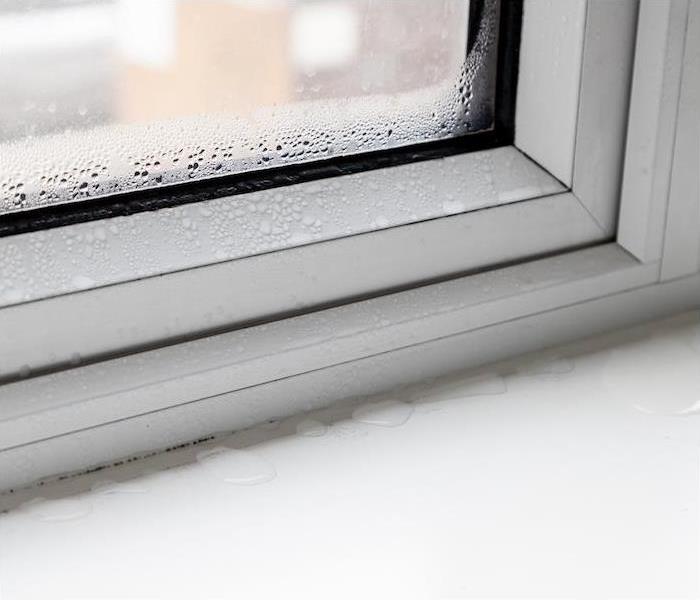Tracking Down Water Leaks with Confidence
1/2/2024 (Permalink)
 Water damage can happen anywhere in your home. Call SERVPRO to restore water damage on your property 24/7, 365.
Water damage can happen anywhere in your home. Call SERVPRO to restore water damage on your property 24/7, 365.
Water is flowing all around us all of the time! It runs through our gutters when it rains, it flows through our pipes to help us wash clothes and dishes and it even sits silently on our roofs in the dead of winter when it snows.
Since we are surrounded by water, the risk of suffering water damage is always constant. Once a leak starts in your home, it can lead to some pretty significant damage in a short amount of time. While we can’t always prevent water leaks from occurring, knowing where they often start can help you track down the source faster so you can recover quicker.
Checking Your Sinks
How many sinks do you have in your home? Each tap that you turn on throughout your house is connected to a water line that could leak at any point. As your home ages, water lines, connections and seals can start to experience wear and tear. Over time, that unsuspecting damage can spring a leak that can cause chaos underneath your sinks.
That water can quickly seep into your cupboards, under your floors and behind your walls, which can be really hard to dry out on your own. Get into the habit of checking your water lines every time you open up the cupboard to put something away or when you are cleaning each space. Tighten loose connections and replace old seals as necessary.
Beneath Your Appliances
We all rely so heavily on our appliances these days, and they are used often in our homes. Dishwashers, water heaters, washing machines and even your ice maker in your fridge need water to function, which means water leaks are almost inevitable at some point with one of your machines!
These types of leaks are usually unexpected and start behind or beneath your appliance, so try to make a habit of pulling your appliances away from the wall to check for damage whenever you are cleaning. If the leak has been occurring for a while, you could be met with significant water spots or even a stubborn mold infestation.
Beneath Floors and Behind Walls
Water pipes are located all over your home and are constantly bringing water in and out behind your walls. Unfortunately, that also means that water leaks can happen behind your walls at any point! Water leaks in hard-to-reach areas are particularly troublesome because there is no way of knowing what happened until the damage has occurred and you are alerted to the problem.
Once water starts leaking behind your walls, it can seep down your drywall and get into your floors as well. If you start to smell a musty odor or discover that a part of your wall is darker in color than it used to be, it’s time to do some investigating.
Around Windows and Exterior Doors
Condensation can form on our windows when there are drastic temperature swings or when it gets really cold out. If that condensation lingers on your windowsills, it can easily start to swell the wood or warp the surrounding area, making the problem significantly worse.
Moisture can also infiltrate your home through the smallest gaps and cracks around window casings or door jambs. Once inside, it can leak down your walls and compromise your home’s structural integrity.
Not all water damage can be prevented, no matter how diligent you are in addressing issues quickly. If you do suffer damage, call SERVPRO® for a quick and reliable restoration. We will make sure to remove all lingering moisture and address repairs right away so you can get back to your regular life faster.
Don’t ignore signs of water damage! Call SERVPRO® for a quick restoration.

 24/7 Emergency Service
24/7 Emergency Service